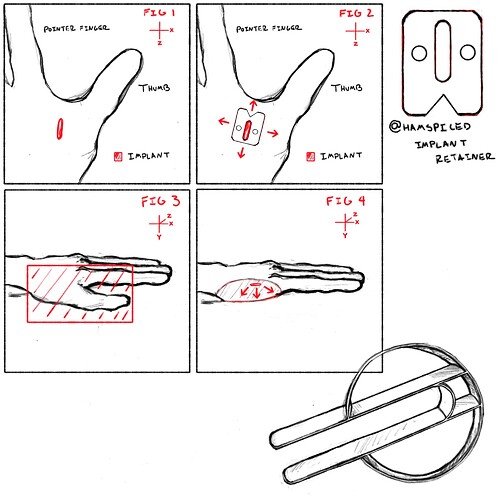Hi all, quick sketch up I did to cover a problem I haven’t seen addressed yet.
Fig. 1 displays an example implantation at location P0.
Fig. 2 displays the use of @Hamspiced implant retainer on the same implantation, which successfully impedes migration of the implant in the X or Z direction.
However;
Fig. 3 shows the P0 implantation from the side, where a red field indicates the cut away region as shown in Fig. 4.
Fig. 4 shows the freedom of the implant to migrate in the Y direction, and subsequently, others.
Observing this, it seems rational to me to suggest that some sort of compressive retainer be used in conjunction with the design made by @Hamspiced so that the implant is held from both the top and the bottom.
At the bottom right of the .jpeg there is a quick brainstorm of a concept for a 3D printable that could achieve this.
